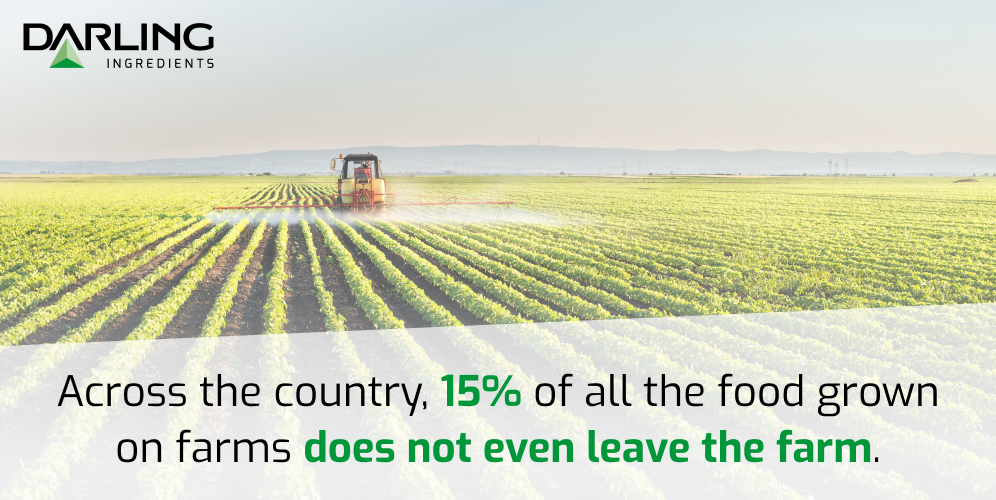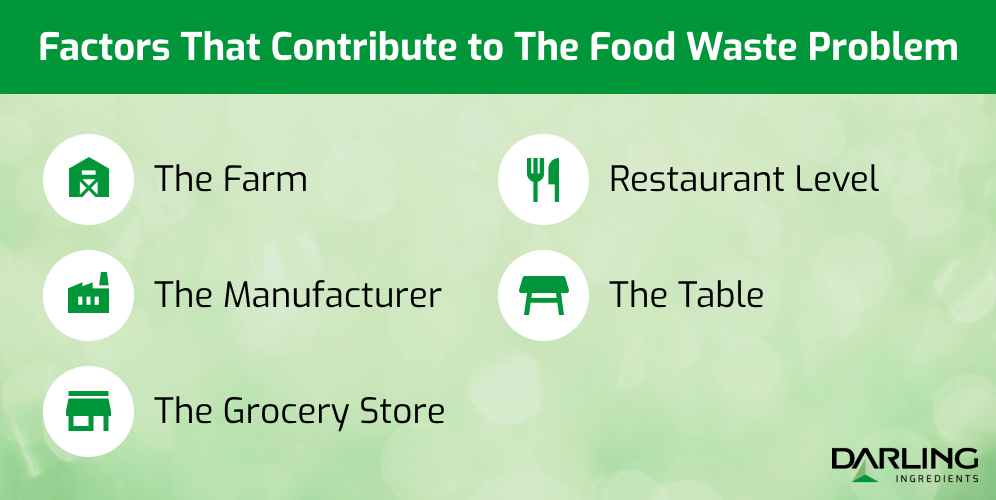Numbers Don’t Lie
35.5 million tons of food in Canada are wasted or lost every single year. That is 58 percent of all the food Canada produces.
2.7 kilograms of garbage is produced by each Canadian every day.
The total amount of food wasted annually in the whole country is enough food to feed each individual Canadian for 5 months.
At the consumer level, more than $10 billion worth of food is wasted and $21 billion at the manufacturing and processing stages.
Food Waste is a Complex Issue.
In order to fight any problem, food waste included, the source of the issue must first be understood. Excess food stems from a variety of factors. Food waste output isn’t as simply quantified as a restaurant throwing away leftover ingredients or a household throwing away good food. Every step in the food supply chain contributes to the rising amount of food waste. Restaurant and consumer level is just one small part in a much larger equation.
The Farm
When it comes to farming, the demand for particular crops changes each year and the excess crops that are grown will likely find their way to a landfill—regardless of the fact that replanting them, if possible, would be better for the environment. Roughly 30-40 percent of food produced by farmers is never even consumed. Across the continent, a sizable percentage of all food grown on farms does not even leave the farm due to weather events, imperfections in how crops are grown, low demand, and workforce shortages.
In order to combat this, the issues with losing food between harvest and distribution need to be addressed. More efficient farming practices would help curb this issue at its source and make a huge difference in tackling the problem.

The Manufacturer
13.5% of food waste is caused in manufacturing plants. Poor training, lack of standard operating procedures, and human error all contribute to food waste in the manufacturing process. Large scale manufacturing plants have a very thin margin for error when it comes to processing foods. An entire day’s worth of product can be labeled as unfit to be processed and sold due to equipment malfunction or one brief power outage. Additionally, meat byproduct as well as fats and oils produced during processing that are considered inedible, are often disposed of when it would be better recycled.
The Grocery Store
Grocery stores throw away a large percentage of their food. Factors such as inefficient inventory ordering, higher prices for products at the retail level, short product shelf lives, and more all lead to this startling number. In order to significantly shrink the output of food waste from grocery stores across the country there are many areas that must be improved. These include improved recycling procedures and inventory management.
One way grocery stores can reduce waste is by recycling used cooking oil from in-house kitchens and delis. A partnership with Darling Ingredients Canada—which includes collection, recycling, and storage systems—makes this process simple and economical.

Restaurant Level
As stated earlier, food waste production isn’t only caused at the restaurant level, but restaurants are certainly major producers when it comes to waste. One report states for each meal in a restaurant, half a pound of food is wasted. The causes for this waste within the restaurant level are similar to the causes at the grocery store and manufacturing level.
Some common ways food is wasted in restaurants:
Inefficient inventory management leading to ingredients needing to be thrown away before ever being used
Unnecessary packaging
Shorter shelf lives
Leftovers being thrown away instead of going to food banks
Large portions
Food sent back to the kitchen is also unable to be used again in any way. Incorrect orders happen in restaurants every day, so all that is sent back goes to waste and contributes to the large percentage of restaurant waste.
The Table
An average Canadian wastes an avoidable $1,766 worth of food each year. That is a startling amount of food within the household that isn’t used and gets thrown away. Some of that waste is caused by small mistakes, such as incorrect portion sizes, poor understanding of expiration dates, and a disorganized approach to grocery shopping.
As individuals, becoming more intentional about how and what we buy along with how we cook it can make a significant impact and improvement in helping solve the food waste problem. (It can keep a little extra money in our own pockets as well.) People have the opportunity to be the most proactive at the household level because there are fewer limitations when it comes to how, where, and when you can recycle food. There is so much work that can be done within the household to help improve the food waste issue. Some of it is as simple as reevaluating how you stock your pantry or donating to your local food bank.

Don’t Waste Time, or Food
Food waste is an issue faced around the world, but North America is the leading producer. Every step within the supply chain has some culpability in this challenge. If measures are not taken in order to reduce the total amount of food waste output, the issue will only grow worse in the years to come.
Darling Ingredients Canada is an industry leader in the recycling of used cooking oil and inedible meat byproducts. Through our work and services, we are helping to reduce the food waste issue in North America and across the globe. Call us at 1-800-263-0302 to find out more about how you can join us on this journey to a greener, more sustainable world.
Contact Sales
For customer service inquiries call our toll free number (800) 263-0302
By submitting this form I agree to the privacy policy including the usage of contact details to contact me for marketing purposes.
